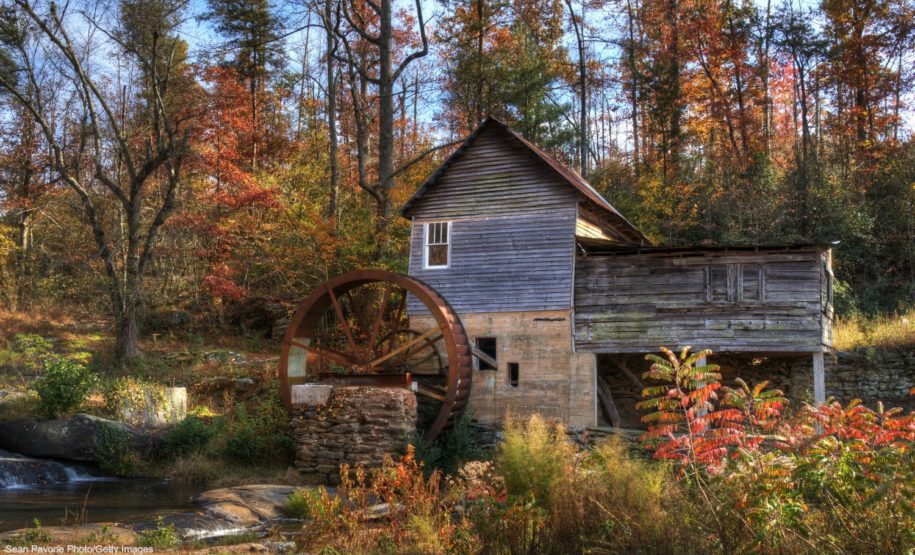Since the 17th century, grist mills have been used to grind corn, wheat, and other grains into flour or meal. The first North American grist mill was built in Jamestown in 1621. The trend quickly spread throughout the eastern mountains over the next couple centuries. The operation of grist mills became a major part of North Georgia farming, and you can still find some of them today! Read on to learn more about the rich history of grist mills and where you can find them during your visit to Helen, GA.
Grist mills are only the beginning of all the history you’ll experience in the North Georgia mountains. Download your free copy of our Helen, GA Vacation Guide for a full list of recommendations for historical sites, museums, and more!
Grist Mill History
From the 17th to the 20th century, classical American grist mills supported farming communities and simplified the production of flour. Most villages had their own mill for local farmers to easily transport their grains to be milled. These communities were very dependent upon their mills as many staples of their diet, such as bread, relied on the ability to make flour. By 1715, the demand for grinding grain had grown so large that the legislature passed a law granting tax-free land to gristmill and sawmill operators. Despite the increasing need for flour and meal, the number of grist mills remained surprisingly small until the mid-18th century.
In 1876, the invention of the roller mill had a tremendous impact on the grist mill industry. Rollers eliminated the amount of work that grist mills required, which saved the miller a great amount of money. Over time, the number of operational grist mills began to diminish, leaving behind only a select few that have fascinating stories to tell.
How Did the Grist Mills Work?
Grist mills were powered by a water wheel, which meant that most of them were situated along creeks with natural falls. The water from the falls operated the wheel that rotated a series of huge millstones. These stones crushed the grain into smaller and smaller pieces. However, these stones would need to be “dressed” periodically, which meant they had to be resharpened for maximum effect.
In order to improve the speed and power of the water, many dams were built near the grist mills. Since they became so effective, locals began harnessing the same waterpower to also saw lumber.
Grist Mills Near Helen, GA
Some of Georgia’s most historic grist mills can be found just outside of our Bavarian village! Explore them for yourself and discover how they operate today.
Nora Mill Granary
Since 1876, the Nora Mill Granary has operated alongside the Chattahoochee River. Even today, the mill uses its original 1,500 pound French Burr Stones to produce quality flour, grits, cornmeal, and even pancake mix. You will also find an old-fashioned country store and gift shop that is stocked with thousands of fun items perfect for your kitchen.
Mark of the Potter
Although this mill now operates as a pottery studio, you can still enjoy its historic setting on the scenic Moonshine Highway. The pottery used to be known as the Old Grandpa Watts Grist Mill until a flood damaged it into a nonoperational state. The mill stood abandoned for many years until a local Georgia couple purchased it and repurposed it into their dream pottery studio. Not only will you have the chance to see stunning locally crafted pottery, but you can also watch the wildlife wade through the river’s shallow water from outside the grist mill.
Experience the History and Culture of North Georgia During Your Stay With Pinnacle Cabin Rentals
Our luxury mountain cabins are the best way to experience North Georgia! Unlike typical Helen hotels, you will enjoy ample space, incredible mountain views and scenery, and a family vacation unlike any other. You will also be spoiled with unparalleled guest service and convenience to all there is to see and do in Helen. Make your next getaway the best one yet and book your favorite cabin with Pinnacle today!
Photo Credit: SeanPavonePhoto/Getty Images

